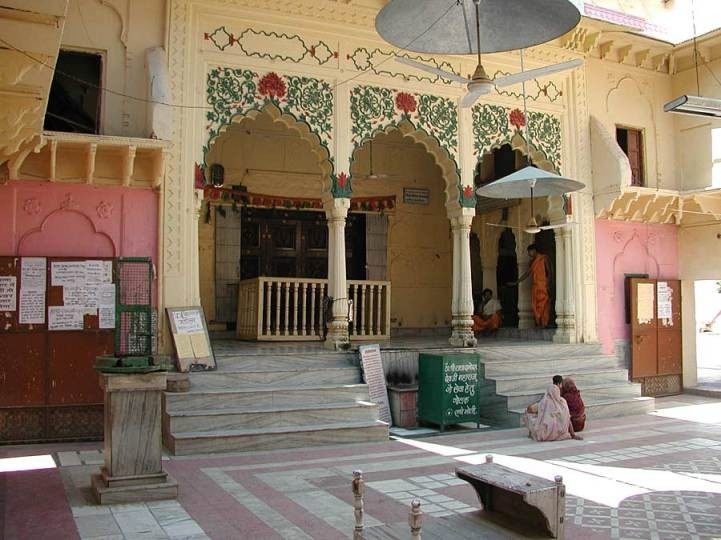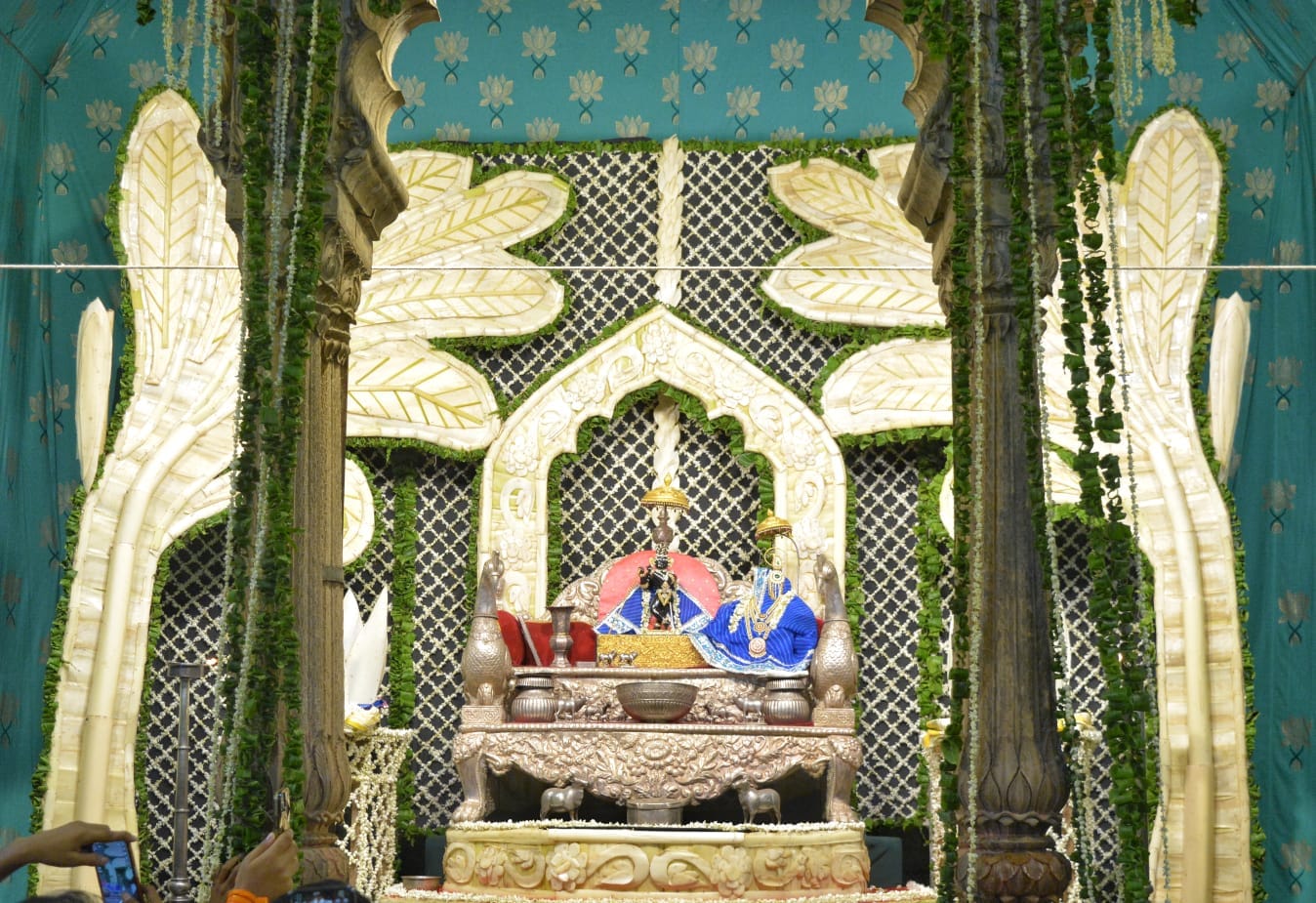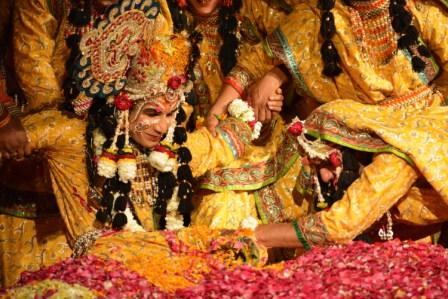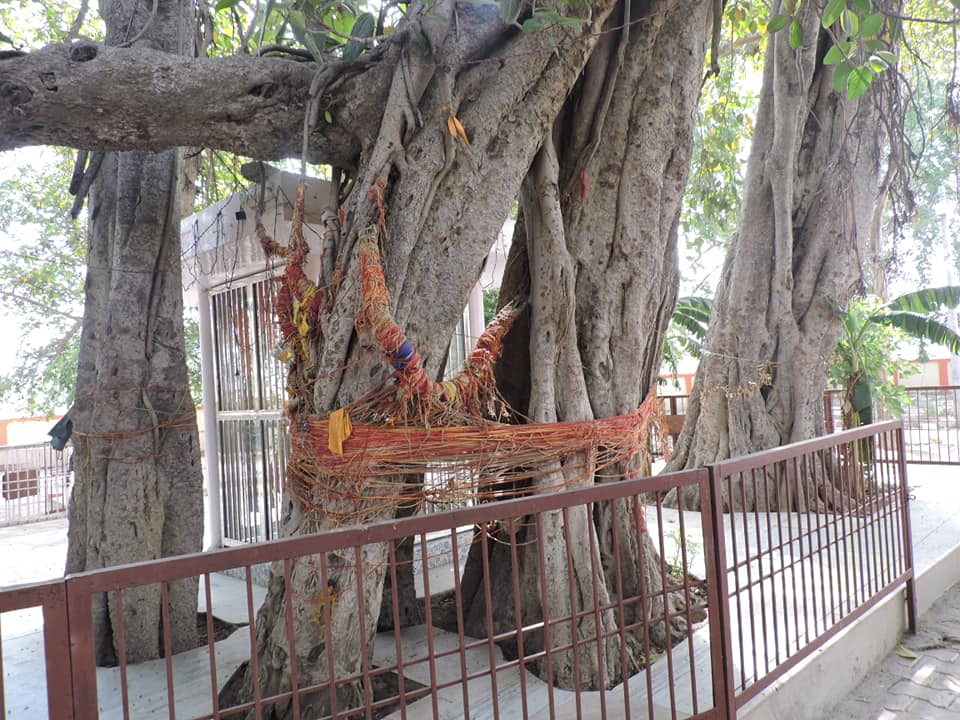Jiva Goswami’s ‘Pustak Thaur’ was no ordinary collection of books. It was an extraordinarily rich, well-known, and meticulously organised and documented set up, as would be expected from this most erudite and prolific of the ‘Shad Goswamis’ who is regarded as the ‘sarvamanya acharya’ (acknowledged and accepted by all) of Vrindavan.
2023.01.05 (Vrindavan Today News): The disappearance day of Shrila Jiva Goswami was recently celebrated on the Shukla Paksha Dwitiya tithi of the month of Pausha at the Radha Damodar temple in Vrindavan. This year it was observed on December 26.
Born in Maldah district of West Bengal to Shrivallabha Mallika – the younger brother of Roop and Sanatan Goswami, Jiva Goswami was a master of Sanskrit grammar, poetry, logic, philosophy, and one of the ‘shad goswamis’ of Vrindavan. Gopala Champu, Sat Sandarbhas, and HariNama-vyakarana are three of his most famous works out of the total 25. He dedicated his life to the service of Shrimad Bhagavtam, as well as to the propagation of Gaudiya Vaishnava teachings and the ‘Achintya Bheda Abheda’ philosophy of Shri Chaitanya Mahaprabhu.
It is a well-known fact that Jiva Goswami established the worship of Shri Shri Radha Damodar in the year 1542 at the temple in Seva Kunj, where his samadhi exists today. The deities were entrusted to him by his Guru and uncle Shrila Rupa Goswami. However, a lesser-known detail about him is that he also established the first library of Vrindavan in the very same precincts.
It was known among the Vaishnava scholars of that time as “Pustak Thaur” – literally a ‘place’ or ‘address’ for books.
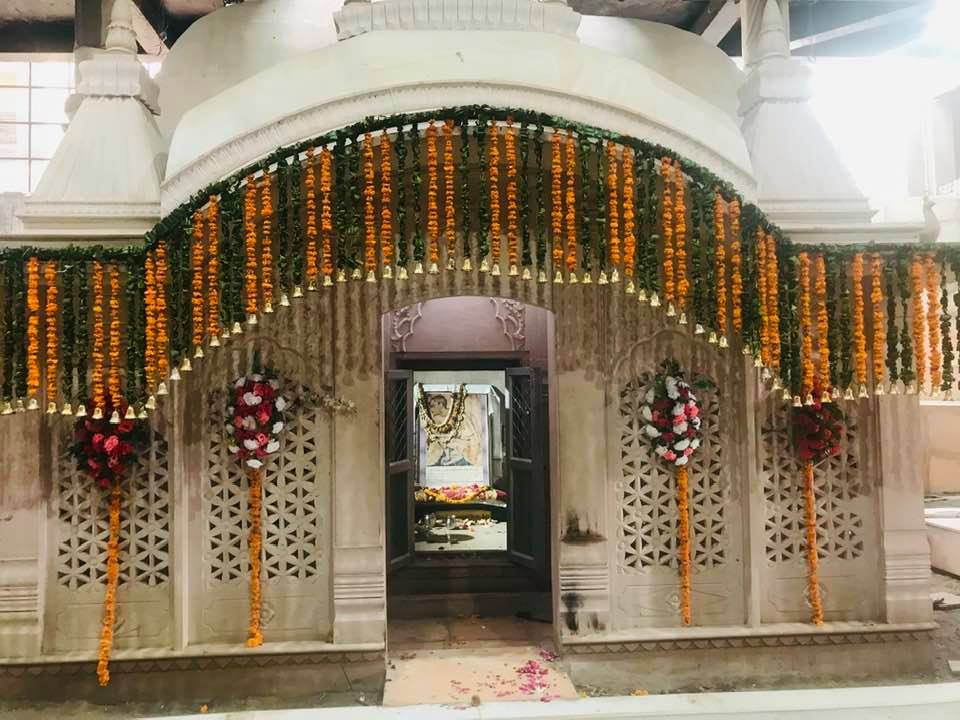
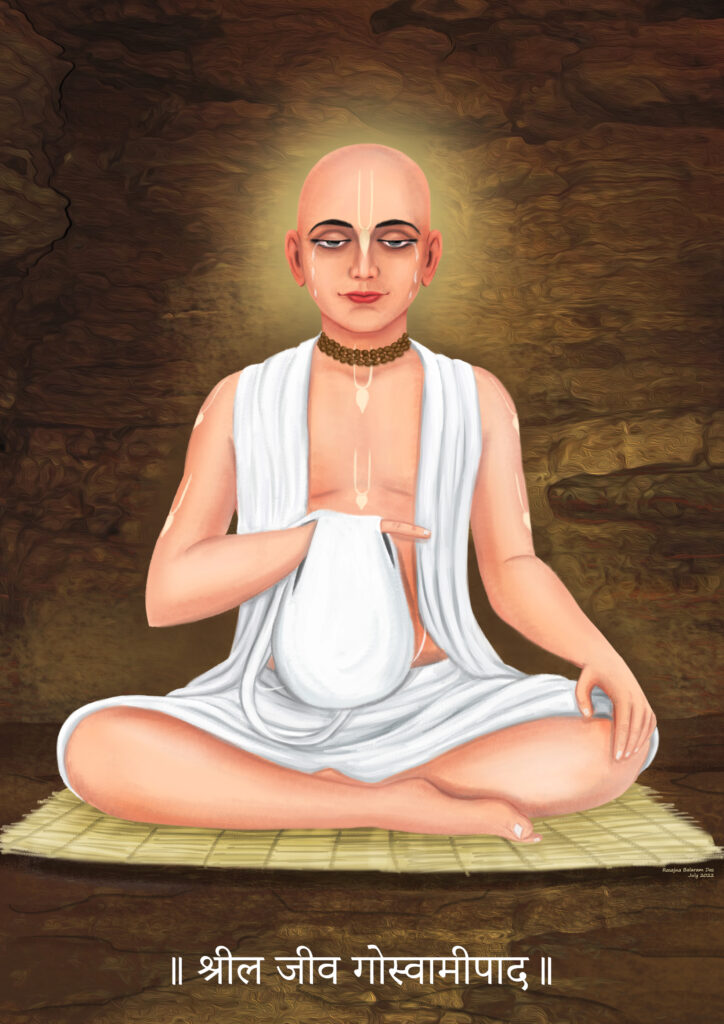
Jiva Goswami’s ‘Pustak Thaur’ was no ordinary collection of books. It was an extraordinarily rich, well-known, and meticulously organised and documented set up, as would be expected from this most erudite and prolific of the ‘Shad Goswamis’ who is regarded as the ‘sarvamanya acharya’ (acknowledged and accepted by all) of Vrindavan.
More interesting is the fact that nearly five centuries ago, much before the advent of printing technology and the conception of ‘library science’ by the west, ‘Pustak Thaur’ was one of the ancient Indian libraries to develop and publish a catalogue of its own in the VS 1654. As a passionate scholar himself, perhaps Jiva Goswami understood the importance of proper cataloguing for others who would come to the temple for study.
At the time when manuscripts were written and replicated on tree barks with natural ink, the setting up of a catalogued library was a great accomplishment, clearly ahead of its time. In fact, Shrila Jiva Goswami himself used a metal stylus to etch the verses he composed in his mind on palm leaves with remarkable accuracy and integrity that is not even possible to comprehend for contemporary writers/scholars who are used to modern editing tools that allow scope for erasing, editing, rewriting, or running a spellcheck. And this he did for not just a couple of hundreds, but a staggering half-a-million Sanskrit verses recorded in the form of nearly 25 compositions.
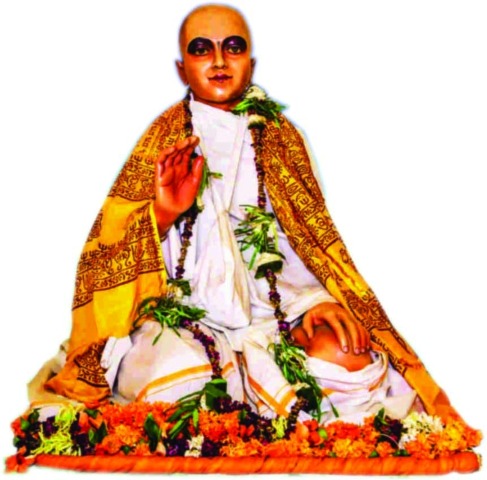
Among the library records of ancient India and also the world, the list compiled by Pundit Kavindracharya Saraswati of Banaras which dates back to the period of emperor Shah Jahan, is particularly well-known. The catalogue of ‘Pustak Thaur’ belongs to the early reign of Akbar, and predates this one.
Vaishnava Das’s commentary on the Bhakta-kalpa-druma known as ‘Vaishnavadasa Kau Tippani’ narrates the incident where Jiva Goswami approached Akbar for a couple of favours, namely paper and ink for the ‘Pustak Thaur’ and some highly valued manuscripts of the Puranas from Banaras. That the emperor obliged is evident from the fact that these Puranas were enlisted in the (VS) 1654 catalogue, found in the annals of the Radha Damodar library. Currently, it is with the Vrindavan Research Institute in Ramanreti. This was just one of the many manuscripts entrusted by the temple management and goswamis to the VRI after its inception in November 1968.
Shrila Jiva Goswamis ‘Pustak Thaur’ not only bears witness to his farsightedness, but also to his leadership and administrative qualities. After the disappearance of Shri Rupa and Shri Sanatana Goswamis, he became the ‘Gaudiya Sampradayacharya’ serving as the beacon of light to Vaishnavas in Vrindavan, Navadwipa, Jagannath Puri and elsewhere. Little needs to be said about his stature in Vrindavan as the senior most Goswami and administrator of town’s three ancient spiritual centres including the Madan Mohan and Govind Devji temples, and Radha Kund.
Jiva Goswami is credited with the establishment of the ‘Vishva Vaishnava Rajya Sabha’ (World Vaishnava Association) and the ‘Rupanuga Vidyapitha’, an educational facility for Gaudiya Vaishnavas to study the works of Rupa and Sanatana Goswami. In 1558, he instructed his students, Narottama Dasa, Srinivasa Acarya and Shyamananda, to go to Bengal and propagate the Gaudiya Vaishnava philosophy, taking with them the original manuscripts that had been written by the two.
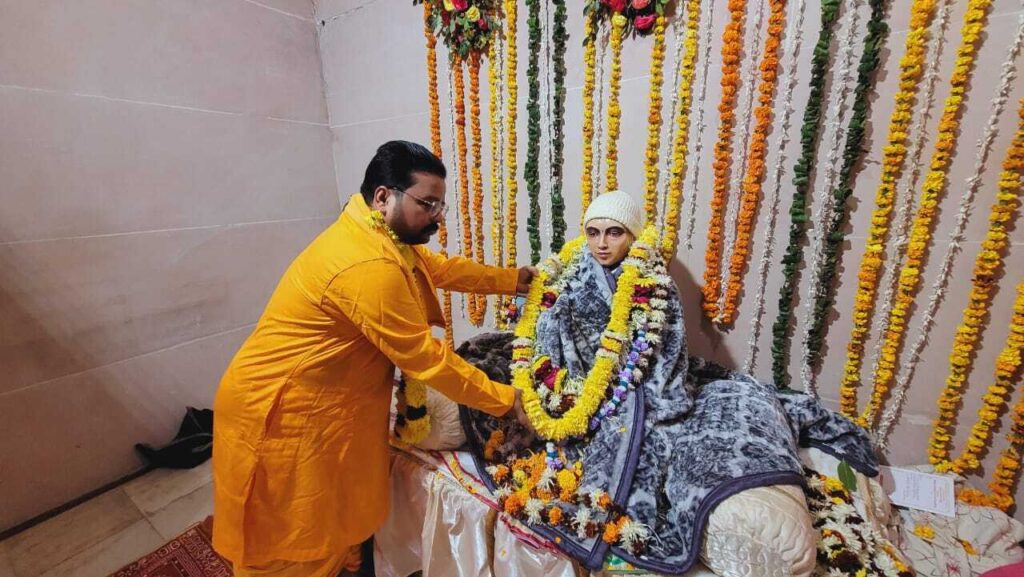
The Radha Damodar temple library was an extension of Jiva Goswami’s dedication to the mission of his Gurus, the Shrimad Bhagavatam and Harinaam, and a matter of great pride for Braj-Vrindavan.


